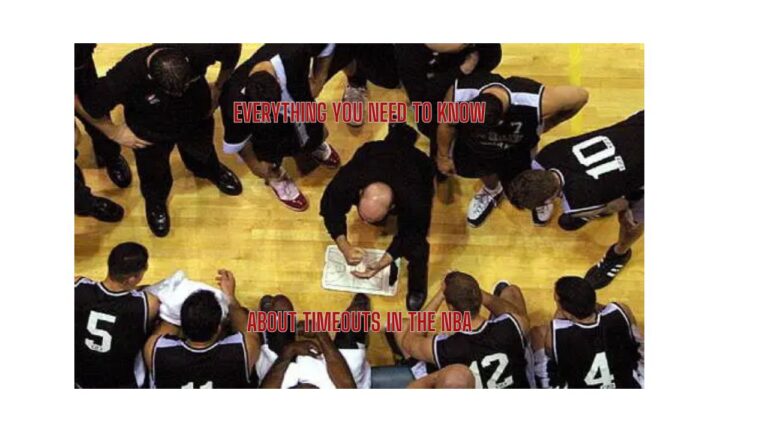
Basketball scrimmages, ranging from high school teams to professional leagues, stand as crucial facets of training. for the sport. As the legendary Kobe Bryant wisely articulated, the pursuit of basketball excellence demands consistent practice and training. This article delves into the multifaceted significance of basketball scrimmages, exploring their pivotal roles in individual skill development, team coordination, strategic planning, and how coaches can harness their potential for holistic player and team growth.
The Nuances of Basketball Scrimmages:
1. Real-Game Simulation: Beyond merely serving as practice matches, scrimmages intricately replicate real-game conditions. They create a competitive atmosphere that aids players in acclimating to the pressure, pace, and dynamics inherent in official matches.
2. Game Plan Execution: Scrimmages serve as laboratories for teams to meticulously implement and refine their strategic game plans. This includes not only offensive plays but also defensive strategies and the crucial in-game adjustments that coaches wish to test and perfect before facing opponents in a competitive setting.
3. Team Coordination: Instrumental in fostering teamwork and coordination, scrimmages provide players with a dynamic platform to develop on-court chemistry. This involves understanding each other’s playing styles, improving communication, and solidifying the essential elements for success during actual games.
4. Performance Evaluation: Coaches leverage scrimmages for a nuanced assessment of individual player performances. This evaluation delves into how players execute plays, adapt to diverse game situations, and contribute to the overall team dynamic.
5. Skill Development: Within the controlled environment of a scrimmage, players have a unique opportunity to focus on specific skills and techniques. Whether it’s refining shooting accuracy, enhancing defensive maneuvers, or honing ball-handling skills, scrimmages facilitate concentrated work on individual aspects of the game.
6. Low-Pressure Learning Environment: In contrast to the high-stakes nature of official games, scrimmages offer a less pressured setting. This freedom allows players to experiment with new moves, try out unconventional plays, and refine their skills without the immediate consequences of wins or losses.
7. Adaptability and Innovation: The flexible and informal nature of scrimmages fosters a spirit of experimentation and innovation. Players can explore creative solutions to challenges, develop a repertoire of moves, and strategically deploy them when needed in actual games.
In-Depth Exploration of Scrimmage Types:
1. Intrasquad Scrimmages:
- Overview: Intrasquad scrimmages involve members of the same team dividing into two groups, essentially creating a mock game within the team itself.
- Advantages:
- Safe Environment: Intrasquad scrimmages provide a comfortable and secure setting for players to experiment with new strategies or positions without the added pressure of external opponents.
- Familiarity: Players practicing against teammates they are intimately familiar with enhances understanding of each other’s playing styles, contributing to improved on-court chemistry.
- Team Building: These scrimmages serve as a valuable tool for strengthening team bonds, enhancing communication, trust, and overall camaraderie among players.
2. Opposing Team Scrimmages:
- Overview: Opposing team scrimmages involve playing against a different team, simulating a more authentic competitive match experience.
- Advantages:
- New Challenges: Facing a different team introduces fresh playing styles, strategies, and challenges, broadening the learning experience for players.
- Real-Game Feel: These scrimmages closely mimic the atmosphere of an actual competitive match, providing a more accurate gauge of the team’s readiness for the season.
- Encourages Adaptability: Opposing team scrimmages prompt players and coaches to adapt to unexpected situations, fostering a more resilient and adaptable team during official games.

Coaching Advantages:
- Assessment of Player Skills: Scrimmages offer coaches a dynamic environment for real-time assessment of individual player skills, including execution of plays and overall basketball abilities.
- Evaluation of Team Dynamics: Coaches use scrimmages as a lens to evaluate how well players collaborate as a team, assessing communication, coordination, and the application of team strategies.
- Testing Tactical Approaches: Scrimmages serve as a testing ground for coaches to experiment with and refine various tactical approaches, aiding in strategic planning for upcoming matches.
- Experimentation with Lineups: Coaches can explore different player combinations and lineups during scrimmages, aiding in the identification of the most effective configurations for various game scenarios and opponents.
- Player Conditioning and Fitness Assessment: Observing players in game-like situations provides coaches with insights into their physical conditioning, including endurance, stamina, and overall fitness levels.
- Identification of Areas for Improvement: Thorough observation and analysis of scrimmages allow coaches to pinpoint specific areas where both individual players and the team as a whole need improvement.
- Real-Time Feedback: Coaches can provide immediate feedback to players during and after scrimmages. This real-time interaction is crucial for helping players understand their strengths and areas for improvement, fostering a culture of continuous learning.
- Building Player Confidence: Successful execution of plays and positive performances during scrimmages significantly boosts players’ confidence. Coaches leverage these moments to reinforce positive behaviors and cultivate a winning mindset.
- Injury Prevention: Coaches actively monitor player health during scrimmages, identifying signs of fatigue or potential injury risks. This proactive approach allows for effective injury prevention and management of players’ workloads.
- Team Bonding and Motivation: Scrimmages contribute to team bonding, fostering a sense of unity and motivation among players. Coaches leverage these opportunities to instill a team-first mentality and cultivate a positive team culture.
How to Organize Basketball Scrimmages:
- Set Clear Objectives: Define specific, measurable goals and objectives for the scrimmage to guide the organization and maximize its impact on player and team development.
- Determine Teams Thoughtfully: Consider player skills, positions, and team balance when dividing players into teams to ensure competitiveness and even matchups.
- Establish Comprehensive Rules: Clearly communicate a comprehensive set of rules for the scrimmage, covering aspects such as the duration of each session, scoring system, fouls, and any specific rules for the session.
- Designate Coaches and Officials Strategically: Assign coaches to each team to provide guidance and feedback. If possible, involve neutral officials or coaches from outside participating teams to act as referees, ensuring impartiality.
- Plan Duration and Breaks Thoughtfully: Determine the length of each scrimmage session and plan for breaks between sessions. This allows players to rest, receive feedback, and make necessary adjustments.
- Communicate Expectations Clearly: Clearly communicate expectations to the players, emphasizing the importance of treating the scrimmage seriously for the purpose of learning and improvement.
- Highlight Specific Focus Areas: Emphasize specific areas of focus for the scrimmage, aligning them with the overall goals of the team. This ensures that the scrimmage serves as a purposeful tool for improvement.
- Assign Record Keeping Responsibilities: Assign someone to keep track of critical statistics and observations during the scrimmage. This could include individual player performances, successful plays, and areas for improvement.
- Encourage Adaptability in Planning: Be flexible and ready to adapt plans based on the flow of the scrimmage. If certain aspects need more attention or if adjustments are necessary, be open to making changes on the fly.
- Conduct a Comprehensive Debriefing: Following the scrimmage, conduct a debriefing session to discuss what worked well, areas for improvement, and insights gained. Encourage open communication among players and coaches to foster a culture of continuous improvement.
- Provide Constructive Feedback: Offer constructive and specific feedback to players after the scrimmage. Highlight positive aspects and provide guidance on areas that need improvement. This feedback is crucial for player development.
- Integrate Regular Scrimmages into Practice Schedule: Incorporate regular scrimmages into the team’s practice schedule to establish consistency. This consistency helps players adapt to game-like situations and contributes to their overall development.
By following these in-depth steps, coaches can maximize the potential of basketball scrimmages, turning them into invaluable tools for player and team development. This comprehensive approach ensures that every scrimmage serves as a purposeful step towards achieving overarching team goals. For making it this far your reward is a video below of one of the greatest scrimmage basketball games ever played.



